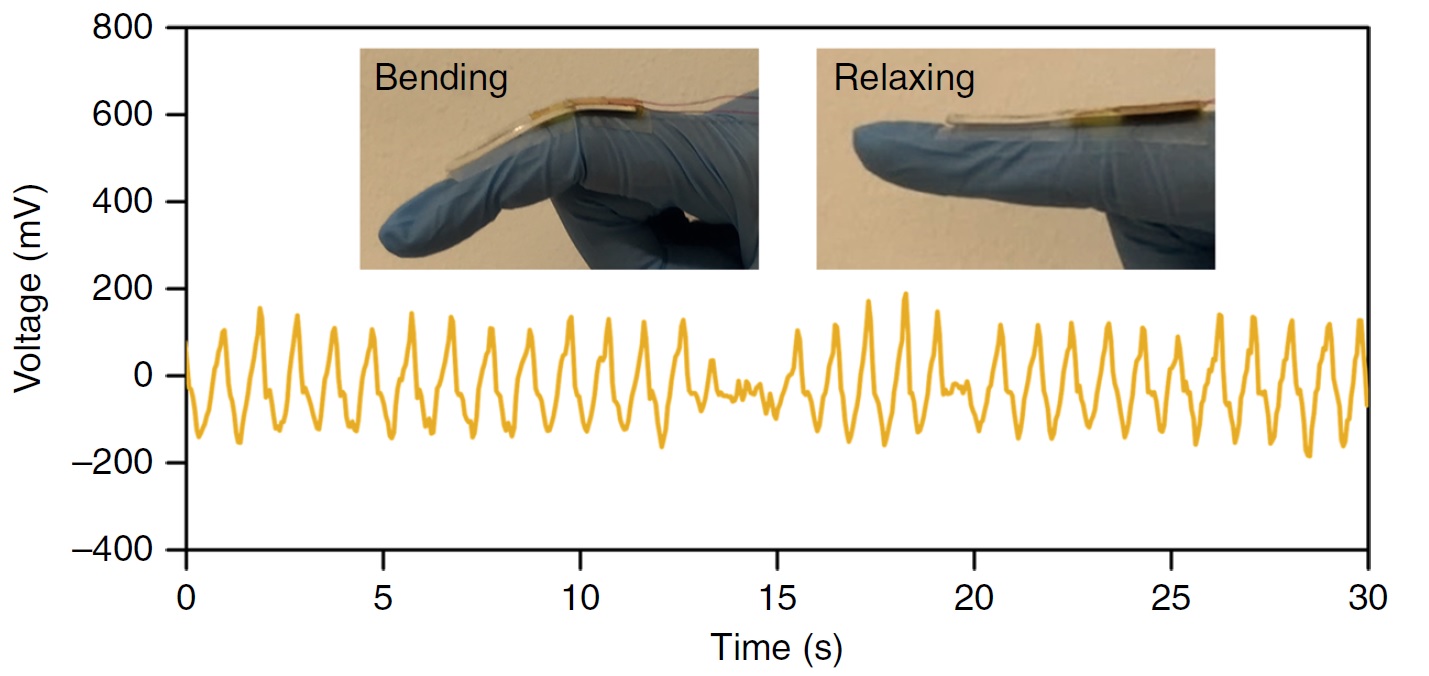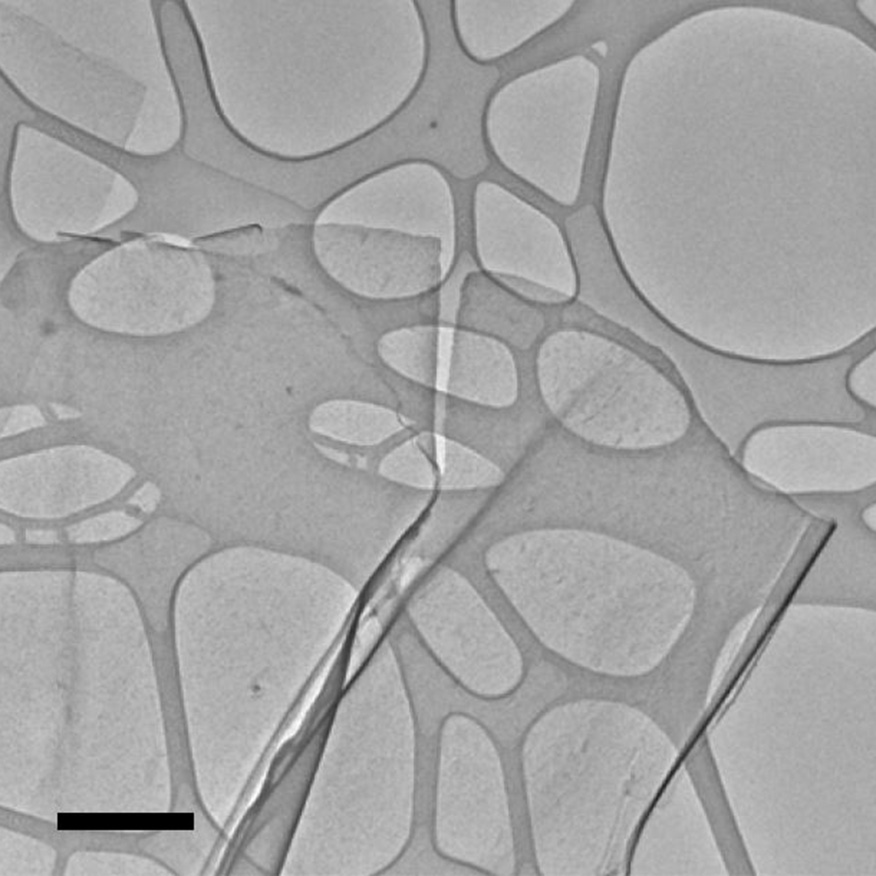Atomically-thin tin monosulfide exhibits strong piezoelectric properties, converting mechanical forces, or movement, into electrical energy. This, along with it’s inherent flexibility, has long made it a good candidate for developing flexible nanogenerators that could be used in wearable electronics or internal, self-powered biosensors.
However, it also has a major drawback. The material has a strong tendency to ‘couple’ and interlayer, making synthesis of useable quantities of single, atomically-thin layers of tin monosulphide extremely difficult.
A new liquid metal technique developed at the FLEET Centre of Excellence based at RMIT University, has allowed researchers to synthesize large scale, homogenous monolayers of tin monosulfide with minimal grain boundaries. This has allowed the researchers to achieve record output power from a tin-monosulphide piezoelectric, bringing us one step closer to flexible, wearable electronics.

This figure shows the output voltage being generated by bending the material in a practical demonstration of a two-electrode device.
At our linked laboratory, the RMIT Microscopy and Microanalysis Facility, optical microscopy and high resolution scanning electron microscopy were used to examine the tin-monsulphide sheets during the development of the technique. Atomic thinness and the low concentration of grain boundaries were identified using dark field transmission electron microscopy (TEM). High resolution TEM was then used to measure the distance of 0.29 nm between the layers of atoms in the tin monosulphide.

Transmission electron microscope image of atomically thin tin sulfide nanosheet (scale bar is 500 nm)
Liquid metal-based synthesis of high performance monolayer SnS piezoelectric nanogenerators was published in Nature Communications in July 2020 (DOI 10.1038/s41467-020-17296-0).
The study is a collaboration between two Australian Research Council Centres of Excellence: the Centre for Exciton Science, and the Centre for Future Low-Energy Electronics Technologies (FLEET). ARC funding also comes from the Discovery Project, DECRA and ARC Laureate programs, and from the RMIT Vice-Chancellor Fellowship.
Facilities and advice from the Microscopy Australia linked lab at the RMIT Microanalysis Research Facility (RMMF) was critical to the success of the study.
Array
August 5, 2020